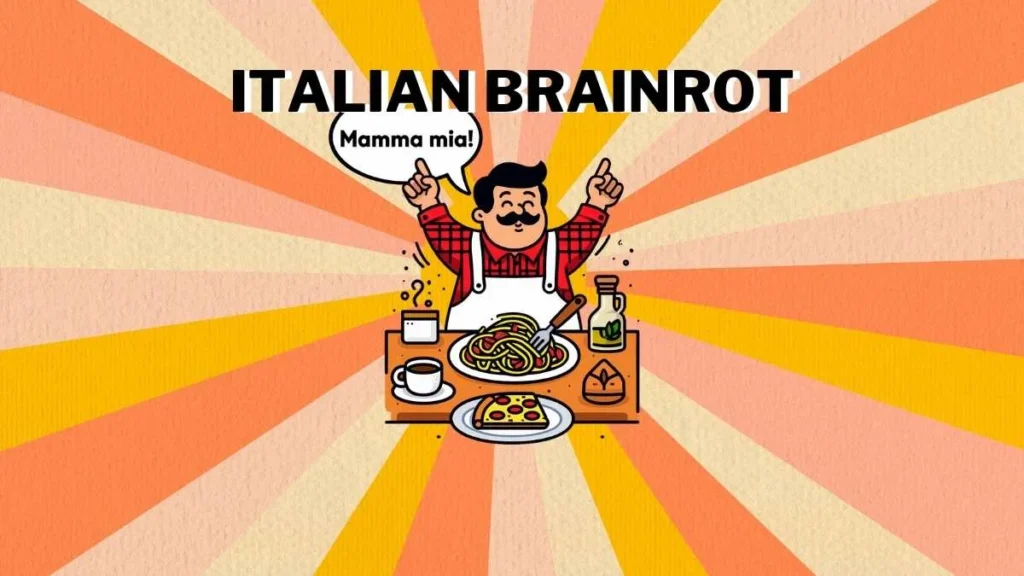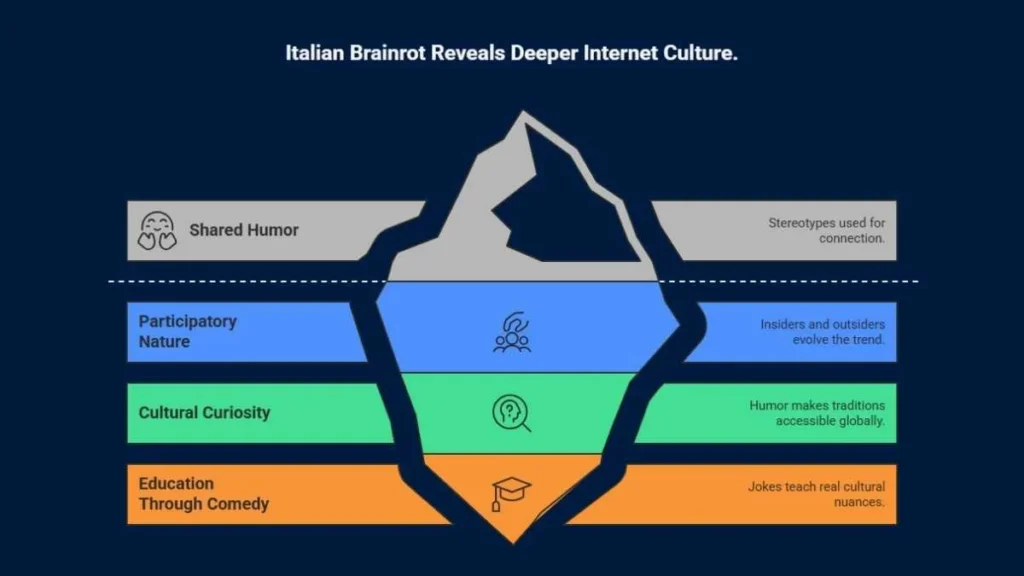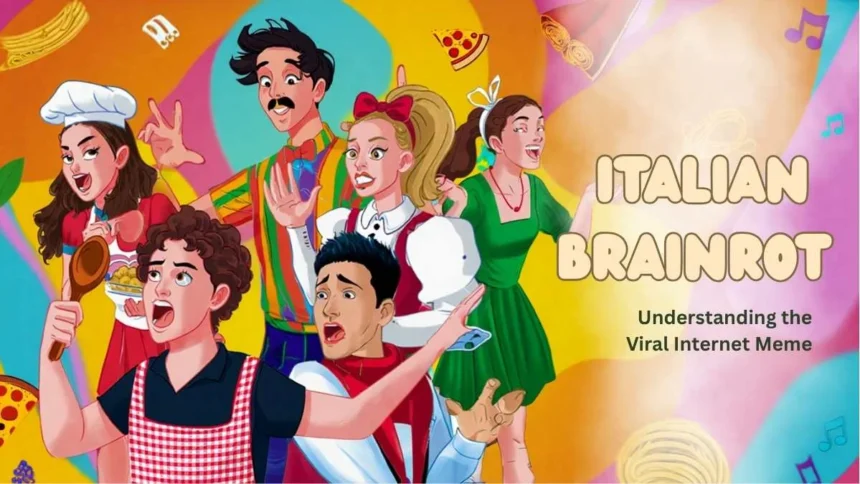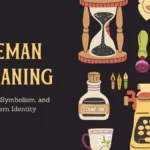Italian Brainrot is a digital phenomenon that blends humor, stereotypes, and internet culture into a globally recognized meme. At its simplest, Italian Brainrot is the exaggerated portrayal of Italian lifestyle, hand gestures, pasta obsession, dramatic expressions, and coffee rituals, circulated widely through TikTok, Instagram Reels, and YouTube Shorts. It is humorous, addictive, and oddly informative, sparking curiosity about Italian traditions through satire.
What makes Italian Brainrot fascinating is its mix of cultural exaggeration and online creativity. Unlike short-lived memes, it draws from real-world habits, food culture, and language, turning clichés into comedy that resonates worldwide. By understanding its meaning, origins, spread, and cultural effects, we gain insight into how online humor shapes identity and cross-cultural communication in today’s digital age.
What Exactly Defines Italian Brainrot?

Italian Brainrot refers to satirical content that exaggerates Italian culture for comedic effect. The phrase combines “brainrot,” meaning endlessly consumable internet content, with Italian stereotypes such as dramatic hand gestures, passionate food debates, and emotional reactions.
It often includes:
- Strong accents paired with theatrical gestures.
- Passionate arguments over pasta, pizza, or coffee.
- Exaggerated family dynamics and cultural rituals.
- Musical or cinematic backdrops highlighting Italian flair.
Origins of Italian Brainrot
The roots of Italian Brainrot can be traced back to two key elements: memes and TikTok culture.
Early Internet Memes:
For years, internet users joked about Italians being passionate about food and communication, often illustrated by the famous “pinched fingers” hand emoji. Videos mimicking Italian accents or dramatizing pasta recipes circulated in meme communities long before TikTok.
TikTok and Reels Boom:
The rise of TikTok accelerated the trend. Short, looping videos allowed creators to amplify Italian stereotypes with catchy audio, sped-up voices, and exaggerated performances. These clips often go viral because of their universal humor, whether or not the viewer is Italian.
Cultural Participation:
Interestingly, many Italian creators themselves embraced the trend, using self-aware humor to play into the stereotypes. This participation from native Italians added authenticity, making Italian Brainrot less about ridicule and more about shared laughter.
Why the Viral Popularity?
The viral rise of Italian Brainrot can be explained through a mix of factors that made it universally appealing. Its relatability lies in themes like food, family, and expressive communication, which audiences worldwide can easily connect with. Platforms such as TikTok, built on short-form content, gave it the perfect environment to thrive, while catchy audio trends like exaggerated “mamma mia!” or “it’s-a-me!” clips circulated rapidly to fuel the cycle. At the same time, cultural curiosity allowed non-Italians to enjoy a playful glimpse into Italian lifestyle, and the fact that Italians themselves embraced the humor through self-satire made the trend feel authentic, inclusive, and safe rather than offensive.
Key Elements of Italian Brainrot
Italian Brainrot revolves around recurring motifs.
- Food Obsession: Pasta recipes, debates over pineapple pizza, or dramatic reactions to cooking “mistakes” are staples. Viewers often see exaggerated rants about how pasta must be al dente or how coffee must only be espresso.
- Gestures and Speech: Many videos parody how Italians cannot speak without using their hands, often exaggerating gestures in absurd ways.
- Family and Tradition: Italian Brainrot also mimics the importance of family, Sunday dinners, and respecting traditions, often in humorous or exaggerated tones.
A Quick Comparison Table
| Element | Real-Life Italian Culture | Italian Brainrot Exaggeration |
| Pasta Cooking | Al dente cooking is preferred | Rage at anyone who overcooks pasta |
| Hand Gestures | Common in daily conversations | Every word is paired with dramatic |
| Coffee | Espresso is central to daily life | Overreaction to non-espresso drinks |
| Family Gatherings | Important cultural tradition | Loud, chaotic Sunday feasts |
TikTok’s Role in Fueling the Trend
TikTok’s audio-driven ecosystem is ideal for Italian Brainrot. Viral soundbites paired with new skits create endless variations. Popular audios include exaggerated accents, opera snippets, or catchphrases like “It’s-a-me!” These loops encourage creators to remix, repost, and reinvent.
The repetitive but flexible content cycle explains why Italian Brainrot sustains momentum longer than many fleeting memes.
Humor or Harm? The Cultural Debate
Like many cultural trends, Italian Brainrot sparks debate.
- Positive Impact:
- Brings global attention to Italian culture in a lighthearted way.
- Encourages cross-cultural humor and relatability.
- Allows Italians themselves to showcase self-deprecating comedy.
- Creates community-driven participation around food, family, and language.
- Potential Downsides:
- Risk of reinforcing stereotypes in ways that may feel reductive.
- Non-Italians using exaggerated accents or caricatures could sometimes cross into cultural insensitivity.
- Overexposure may reduce the richness of Italian culture to just a handful of clichés.
What Italian Brainrot Teaches Us
The trend highlights four key aspects of internet culture:
- Stereotypes as Shared Humor: Used carefully, they can connect rather than divide.
- Participatory Nature: Both insiders and outsiders fuel the trend’s evolution.
- Cultural Curiosity: Humor makes traditions accessible for global audiences.
- Education Through Comedy: Even jokes teach viewers real nuances like pasta etiquette.

FAQs
Q1: Does Italian Brainrot only exist on TikTok?
No, it also thrives on Instagram Reels, YouTube Shorts, and meme pages.
Q2: Is Italian Brainrot offensive to Italians?
Generally not, since many Italians create and share these videos themselves.
Q3: Can Italian Brainrot help people learn real culture?
Yes, it often introduces authentic habits like pasta etiquette, even if exaggerated.
Conclusion
Italian Brainrot shows how humor and culture blend in today’s digital world. By exaggerating gestures, food rituals, and traditions, it entertains while sparking curiosity about Italian identity. Despite concerns about stereotypes, its participatory nature and cross-cultural reach make it more celebratory than harmful.
Ultimately, Italian Brainrot is more than fleeting entertainment; it is proof of how online spaces can unite global audiences around laughter, culture, and creativity.






